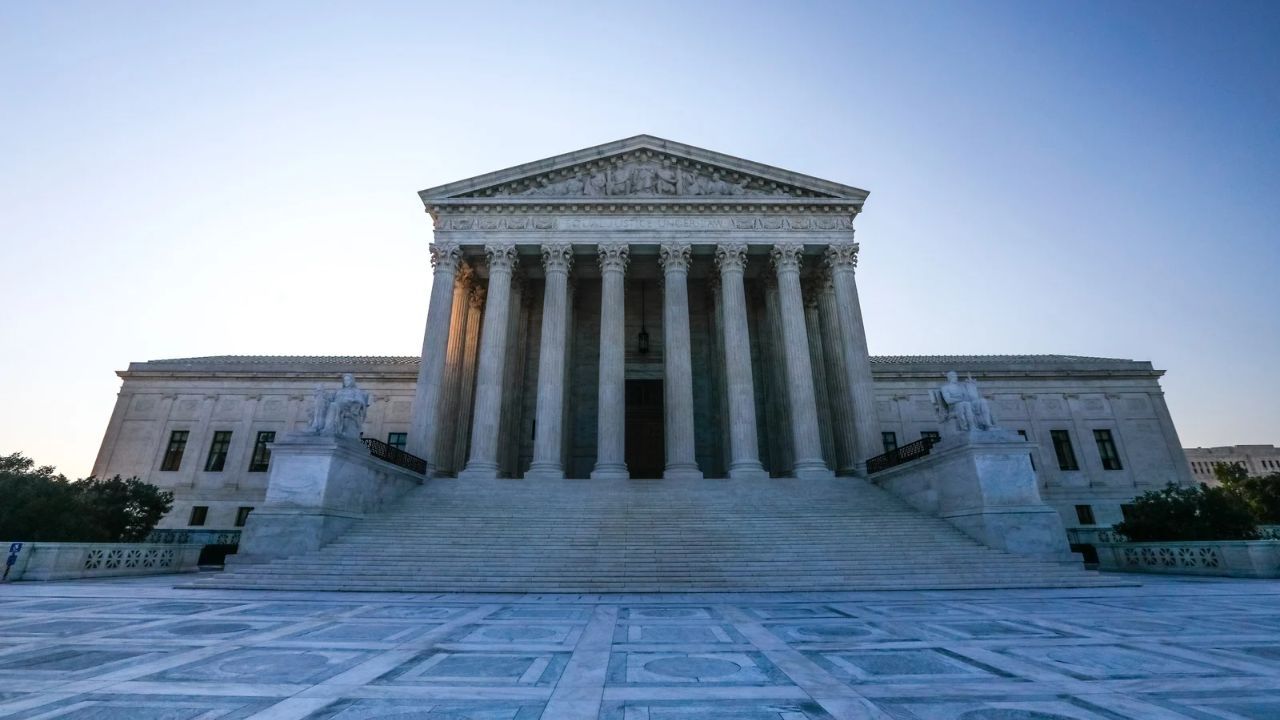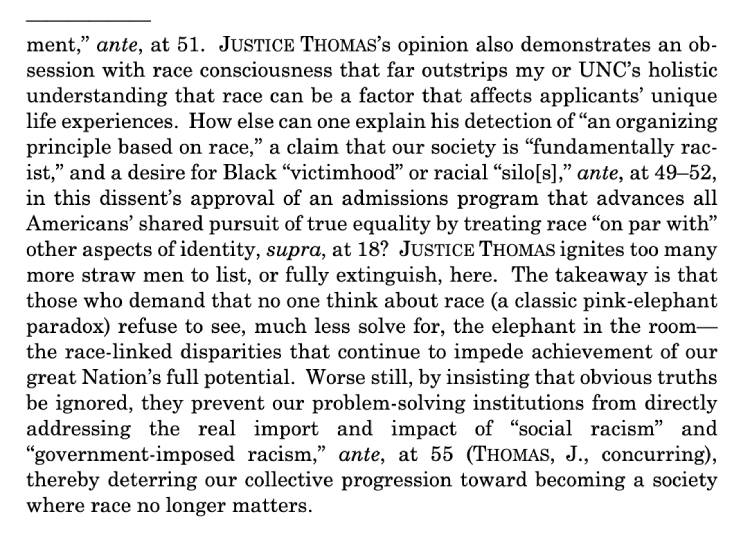SCOTUS Undoing 50 Years of Progress
Jul 05, 2023
Last week I wrote about two US Supreme Court decisions that validated fair elections and human rights. They struck down the theory of the independent state legislature, which would allow states to overrule the will of the people during elections, and they upheld the right of female students to wear pants in public schools. If you get my newsletter, then you also read about the SCOTUS decision that innocent people who have been convicted must serve their sentences.
Two days later SCOTUS made discrimination OK again and rolled back the main program that only slightly evened the playing field in education and the workplace for marginalized groups.
It’s OK to Discriminate
One landmark case seems to be based on hypotheticals. SCOTUS (Supreme Court Of The United States) decided that is OK for creative businesses to discriminate based on sexual orientation. They ruled that a web designer can refuse services to same-sex couples under the guise of free speech. It's been reported that the plaintiff in the case was never asked to create a website for a same-sex couple. As I understand it, in order to bring a case before the court, there has to be actual damage or the potential for damage has to be probable, not just possible. In this case the plaintiff filed the case before she opened her web design business and was never asked to create a same-sex wedding website. While I'm sure some people knew this as the case progressed through the court system, I'm not hopeful that this decision will be overturned anytime soon.
A Slight Remedy for Hundreds of Years of Injustice is Illegal
The second important SCOTUS decision was to overturn affirmative action policies at universities by a vote of 6-3. Justices Ketanji Brown Jackson and Sonia Sotomayor wrote scathing dissents. Twitter has been trippin' on Justice Brown's footnotes to Clarence Thomas.


An Asian student was the lead plaintiff in a case against University of North Carolina and Harvard University, alleging that he was denied entrance due to affirmative action policies. In reality, the case had been created years ago, and white supremacist lawyers shopped around looking for the perfect plaintiff to be the face of the case.
Many people don’t even understand what affirmative action is, believing that it gives an unfair advantage to Black folks. The LA Times laid out some major misunderstandings about the policy.
The idea of affirmative action related to collective bargaining and unions began with the Wagner Act in 1937. The term wasn't paired with racial equity until President John F. Kennedy in 1961.
A major talking point for people who don't like affirmative action is that admissions, hiring, and promotions practices should be based on merit, with no consideration for race. The problem with this idea of merit is that it assumes that able-bodied white people are smarter, more qualified, and more deserving of opportunities than other people. Studies show that when organizations are not required to consider race, they hire and promote based on who they're most comfortable with, not who's most qualified. Most times this is someone who looks like them.
Another point that opponents of affirmative action often get wrong is that affirmative action does not promote unqualified people. It gives opportunities to qualified people in marginalized communities who would otherwise be passed over. As a matter of fact, the group who benefits most from affirmative action is white women. So while Black people are the face of affirmative action, white women, people with disabilities, and other people of color also benefit.
How SCOTUS’ decision to overturn Affirmative Action will irreparably harm millions of disabled Americans. #DisabiltyTwitter #BlackTwitter #ableism #SCOTUS #AffirmativeAction #racism #HigherEd #CivilRights #BlackLivesMatter pic.twitter.com/eEI7WSei6l
— Ola Ojewumi (@Olas_Truth) July 2, 2023
Colleges and Universities Speak Out in Favor of Diversity and Affirmative Action
Claudine Gay began her term on July 1st. It's very convenient and looks good for PR that Harvard has a Black woman president right now. She is immensely qualified
"The Supreme Court decision on college and university admissions will change how we pursue the educational benefits of diversity–but our commitment to that work remains steadfast." pic.twitter.com/XacKygEyii
— Harvard University (@Harvard) June 29, 2023
Read President @sianbeilock's letter to our community on today’s ruling by the Supreme Court.: https://t.co/3fPPh1IPTL pic.twitter.com/ZYhzJKblvj
— Dartmouth 🌲 (@dartmouth) June 29, 2023
While the messages sound good, just like the corporate messages of support for the Black Lives Matter movement, I'll be watching to see what these colleges and universities actually do.
The Real Affirmative Action: Legacy Students
Real affirmative action in higher education shows up in the form of legacy admissions, students who receive preference because family members attended the university or made large donations. The 36% of legacy students who are admitted to Harvard take far more student slots than the 6% of Black students who earn admission.
Let’s talk about the real affirmative action in America.
— Robert Reich (@RBReich) July 2, 2023
In Harvard’s Class of 2022, 36 percent of those admitted were legacy students.
70 percent of those legacy applicants were white.
This is a reality that's echoed amongst other elite universities across the country.
Days after the SCOTUS ruling against affirmative action, three civil rights groups filed a complaint against Harvard, claiming the preferential policy for undergraduate applicants with family ties to the elite school overwhelmingly benefits white students.
The Real Impact of Less Diversity
The outcome of having a less diverse student body is critical. In some cases, it's life or death. For example, Black doctors are literally more likely to assess Black patients more accurately and save Black lives.
While most colleges and universities don't use affirmative action because they accept most students who apply, the impact on colleges and universities that do use affirmative action will be immediate. In 1996, California voters approved Proposition 209, banning affirmative action at public universities in the state. Diversity plummeted at UC's most competitive campuses. According to a 2020 study, enrollment among Black and Latino students at UCLA and UC Berkeley fell by 40% the next year. And more than 25 years later, California institutions of higher education has not been able to reach their equity and diversity goals.
Cracks in the Progress
Both of these decisions have put a crack in progress for human rights in the United States and made a path to create more inequality. With Florida allowing doctors to deny care to LGBTQ folks and now the US Supreme Court deciding it's OK to discriminate against same sex couples, we will see more legislation upholding racism and discrimination.
Republicans have already said that they'd like a national abortion ban and to see interracial marriage laws be returned to the states instead of having a national law. The GOP tells us exactly what they want to do. I believe them.
Laws Don't Change Hearts and Minds
Legislation alone is not going to change this. If laws alone worked, we would not still be fighting for human rights. In order to change social norms and attitudes, people have to speak up, take risks, and create the safe spaces that we need for each other.
So What Do We Do?
- The first thing is to know what's happening, not just nationally but locally. What's happening in your state, in your city?
- Call your representatives and make your opinions known. Use an app like 5 calls, available on Google Play and in the App Store, to help you know who to call and what to say.
- Find out what groups in your area support human rights and give time, money, and other support. It might be as simple as making phone calls or writing postcards. But it could mean using your privilege and network to connect people or make the work easier. It might even mean providing a safe haven for people harmed by new laws.
- Talk about what's happening. This is not the time to stay silent. Recruit other people to help.
- Be vigilant about your own safety and the safety of people around you. Work with a group who can teach you what to say in public and how to speak in code, when necessary. For example, if you're willing to help women from an anti-abortion state have access to abortion in your area, work with a group who knows the law and how to keep everyone safe.
Ready to DO something right now? Download the Everyday Activism Action Pack and get started today.
We hate SPAM. We will never sell your information for any reason.

